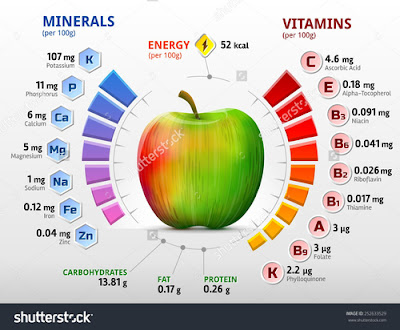When it comes to apple nutrition, one important thing that should be known is that these apples are very low in calories. So if you are dieting, no matter how severe, you can easily lose weight with this delicious fruit. Even if you are trying to maintain your current weight, this is one super food that will help you do just that!
There is an apple a day that doesn't weigh you down. Since apple nutrition is all about the nutrients, it's a wonder that it provides so much of the vitamins and minerals we need every day. We get all of the vitamins and minerals we need from cereal, vegetables, meats, and even our dairy products. However, when it comes to apple nutrition, we get more than we expect.
One super apple nutrition fact that lots of people don't know is that the apple contains quercetin. Quercetin is an antioxidant found in red grapes and black cherry juice. This powerful antioxidant keeps arteries safe, which reduces the risk of heart disease. The less clogging you have in your arteries, the less fat you are likely to gain. And the lower the fat content of your blood, the lower your cholesterol is likely to go.
In addition to good source of quercetin, apples are a good source of vitamin c. Vitamin c is an anti-inflammatory and acts as a catalyst to the release of cholesterol from plaque. It decreases the bad LDL cholesterol in your blood and increases the good HDL cholesterol, which is the type of cholesterol that actually carries your cholesterol away from your body. Apples are a very good source of this vitamin! Also, there are many other fruits with quercetin like pears and apricots. The good news is that there are relatively low levels of quercetin in oranges, which is why they have a much higher concentration of vitamin c. However, an orange is a pretty hard fruit to eat so that may account for why there aren't more orange apple nutrition facts out there!
Apple nutrition is also enhanced by potassium, another nutrient often overlooked but a very important one for our bodies. Potassium helps us move our muscles, both mentally and physically. Not only that, but it helps control our body temperature, something that we all need to stay healthy no matter what the season is.
Another apple nutrition fact that most people don't know is that apples contain a surprising amount of fiber! Apples are a great source of fiber and you should include it in your diet. The reason why apples contain more fiber than any other fruit comes from how their skin works. Apples are made with a 'peel' that has tiny spikes on it. These spikes contain tiny bits of fiber, so when you eat the apple the tiny bits of fiber are released. About a half an ounce of apple contains about eight grams of fiber!
Apple nutrition facts really show how much a healthy apple is. The skin is very healthy and doesn't contain any calories, so the apple is a great snack or juice to include in your diet. The nutrients that apples contain are excellent for your overall health. And the fruit itself is easy to enjoy!
